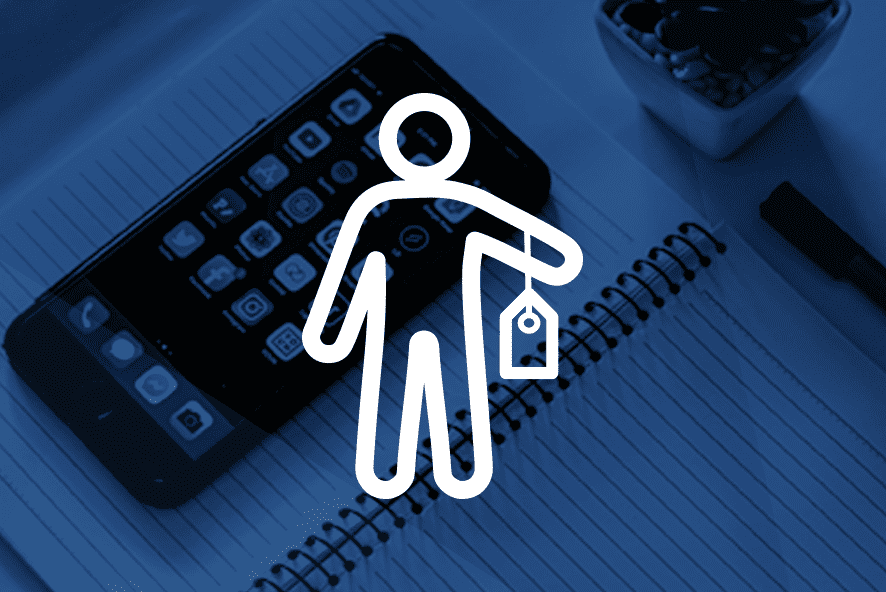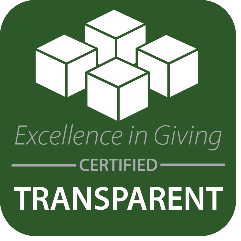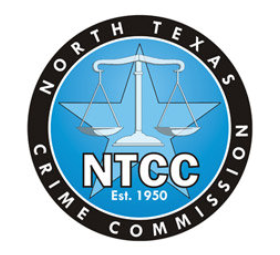Human Trafficking: Key Statistics and Resources
Knowledge is power. Read about what human trafficking is really like in America, and what you can do as a citizen to join the fight to end it.
What is Human Trafficking?
Human trafficking is a crime that occurs far too often in the world and in the United States. A common misconception is that human traffickers largely conduct business overseas, but the reality is that nearly 60,000 people are trafficked into the country every year, and the majority of those are females, trafficked for sexual exploitation.
Another common misconception is that human traffickers are kidnappers who drive large vans and kidnap unassuming people from back alleys. Again, the reality, sadly, is far worse. Human traffickers operate in public and will use all sorts of tools and tactics at their disposal to get what they want. These efforts often come in the form of psychological manipulation.
So how do these predators operate? And what are some of the purposes they are trafficking individuals for? Continue reading to find out more.

Types of trafficking
Common principles and concepts that apply to all forms of human trafficking, according to the U.S. State Department, are debt bondage, state-sponsored human trafficking and the unlawful recruitment or Use of Child Soldiers. See below for a better understanding of the different types of human trafficking.
The recruitment, harboring, transportation, provision, obtaining, patronizing, or soliciting of a person for the purposes of a commercial sex act, in which the commercial sex act is induced by force, fraud, or coercion, or in which the person induces to perform such an act has not attained 18 years of age.
Of all the different types of human trafficking, sex trafficking is the most commonly discussed. 96% of trafficked victims are female, and though it’s true that this entire group is not being sexually exploited, it is estimated that between 15,000 and 50,000 women and children are forced into sexual slavery in the United States every year.
These are alarming numbers, and what makes them even scarier is that because these crimes happen behind the scenes, it is very difficult to research and obtain concrete details. It is important to know that sexual slavery doesn’t always come in the form of prostitutes and pimps. In fact, because of modern technologies and avenues such as the online porn industry, traffickers have entirely new outlets through which to exploit their victims.
Child sex trafficking is a subset of trafficking under sex trafficking, and “familial trafficking” is a form of child sex trafficking where trafficking experiences are facilitated by family members and/or caregivers.
The recruitment, harboring, transportation or obtaining of a person for labor or services, through the use of force, fraud, or coercion for the purposes of subjection to involuntary servitude, peonage, debt bondage, or slavery.
Human trafficking today still consists of the use of slave labor, with traffickers often taking advantage of refugees or undocumented persons. These victims likely feel like they have little representation or voice and work out of fear of violence, punishment, threats made about loved ones, or deportation.
Although it is difficult to attain accurate statistics on how many victims are being exploited, the most common industry where labor trafficking occurs is agriculture, where people are put to work for long hours of manual labor. Additionally, there is no reason to assume that this type of forced labor takes place only on small remote farms. Large corporations can still be guilty of exploiting a workforce, either threatening them outright or paying them a dismal wage.
Domestic servitude and forced child labor are subsets of human trafficking under forced labor.
Human Trafficking Statistics
The average age of a child sex trafficking victim in the U.S.A. is 15 years old
98% of victims in active criminal sex trafficking cases in 2020 were female
Types of Human Traffickers
Sadly, there are many industries that exploit individuals and coerce them into modern slavery of one form or another. While there are certainly methods of spotting a victim (if a hotel housekeeper is asking for tips, for example) the efforts and organization of these criminals is far-reaching.
Human traffickers use sadistic methods to not only control an individual, but also to make passersby assume that nothing is wrong. For instance, if someone pays a woman for sex, they might feel that the act was consensual, not considering that this woman is in fact being exploited and that a trafficker is using means of control.
*The following types/styles of pimps are not mutually exclusive. A pimp may operate primarily as one type of pimp but commonly utilizes aspects of all pimping styles.
* Also known as Finesse Pimps and Lover Boy Pimps.
WATCH OUT FOR: men who fall in love too quickly, men or women (recruiters) who encourage teens to run away from home and promise a happier life.
WHAT THEY SOUND LIKE: "I love you."
"Nobody else understands me."
"'I'lI give you everything you deserve."
"I can't live without you."
"Dream with me."
WATCH OUT FOR: men 18+ who hang out with younger, girls. Overly friendly girls (recruiters) who persistently invite other teens to party and drink/do drugs with them.
WHAT THEY SOUND LIKE:
"Come party with me."
"Don't tell anyone where you're going."
"If you don't do what I say, I'll send nudes to your familv"
"I can make sure vou are never found."
WATCH OUT FOR: men who flash cash and promise stardom. 'Agents' who are too pushy. 'Agents' who want bikini or "artistically nude" photos. 'Rap artists' looking for music video models.
WHAT THEY SOUND LIKE:
"I'm an agent/manger. You have what it takes to make it in this industry. Trust me."
"This is strictly business."
'I can make vou rich/famous."
CONTROL & ISOLATION: Pimps keep victims close and make them dependent by calling constantly, moving them in, taking money away, monitoring moves, etc.
PSYCHOLOGICAL MANIPULATION: Pimps keep victims close and make them dependent by calling constantly, moving them in, taking money away, monitoring moves, etc.
How traffickers operate
While there is no question that human trafficking is a complex issue and that traffickers use organized and even “intelligent” methods of control, the breakdown of how a trafficker operates can be broken down like this:
Connect to potential victims through various tools, such as social media, video gaming consoles, and chat rooms to name a few.
Discover what makes a victim most vulnerable, such as emotional neediness, low self-confidence, or economic stress.
Obtain trust through conversations, or even send current victims to interact with newly targeted victims as scouts.
Force victims into a dependent relationship through gifts, love, friendship, drugs, or alcohol.
Wedge themselves between the victim and those closest to them.
Demand a service they offered must be repaid, likely through sex, and maintain control with threats, violence, fear, or blackmail.
Risk factors for human trafficking
Here are the biggest risk factors contributing to adult human trafficking:
When someone abuses substances and cannot get more of what they want, they become desperate and will do anything to get it. Many men and women turn to prostitution to earn money to support their habit. With human trafficking being a multi-billion dollar industry, the traffickers know where to look to find the vulnerable people they want.
Those who recently migrated to the United States are highly susceptible to adult human trafficking because they want to earn money but are unsure about the steps to take. They can easily be tricked into a bad opportunity that leads to labor and sex trafficking.
This applies to both adults and the youth. When someone’s home life is bad enough, they’ll do anything to avoid going back. Traffickers are able to identify this, they know what questions to ask, they’ll find out about your history and why you’re homeless. Once they know that the person is destitute, they’ll manipulate with fake opportunities and false promises.
Mental health is another factor that can lead adults into trafficking. Traffickers will prey on those who aren’t capable of taking care of themselves and trick them into believing that they’re providing a unique opportunity.
Join the Fight!
Every trafficking case represents a person who has been exploited by a predator. With your support, we can give our law enforcement partners the tools they need to solve more cases faster.
What Is The Difference Between
"Human Trafficking" And "Human Smuggling"?
Human Trafficking
Force, fraud, coercion and/or violence is used to recruit victims to be exploited for their acts of labor for profit.
The crime is against a person and their human rights.
Victims do not have to be transported to be trafficked.
The trafficker continues their relationship with the victim as long as they can for maximum profit.
Human Smuggling
Victims must be transported across legal boundaries/ borders for a crime to take place.
The crime being committed is against the country being entered for breaking immigration laws.
The criminal act requires movement across an international border.
The relationship with the smuggler ends once the person is moved across the border.
How are they related?
The smuggling of persons and the trafficking of persons is a very profitable crime.
Criminal networks are often involved in both crimes.
Smuggling persons are at a higher risk of being trafficked.
Unaccompanied smuggled children are more easily placed in situations of danger by smugglers and are more susceptible to exploitation.
Frequently Asked Questions about Human Trafficking
According to Polaris, the most likely victims are recent migrants who followed a bad job offer or advertisement. This will likely take a lot of people by surprise. It’s commonly believed that sex trafficking is the biggest issue facing the country but it’s actually labor trafficking.
It’s believed that 12.3 million people are forced into labor and 2.4 million of those are the result of labor trafficking. As many as 17,500 people are brought into the United States through the labor trade to be forced into modern-day slavery.
America is considered one of the worst countries for adult human trafficking, with the top three being Mexico, the United States, and the Philippines.
The good news is, you can get involved. It starts with awareness of human trafficking and the severity of the situation. No matter what age the individual is, trafficking is a serious problem and something we take a lot of pride in working to prevent. You too can join the fight against human trafficking. Learn more today and help us make a difference!
More Information on Human Trafficking
Human Trafficking Safeguard App
With one simple app, you can access the world’s most extensive digital database of potential human trafficking activity. By simply inputting a phone number or email, you will instantly be alerted if it has links to our database records. Empower yourself to help ensure the safety of your community with the Human Trafficking Safeguard app.
Welcome to the movement to end human trafficking and child exploitation.
Receive updates from DeliverFund
Sign up to receive our monthly newsletter.
We’ll keep you informed on our fight against human trafficking, and how you can help.






